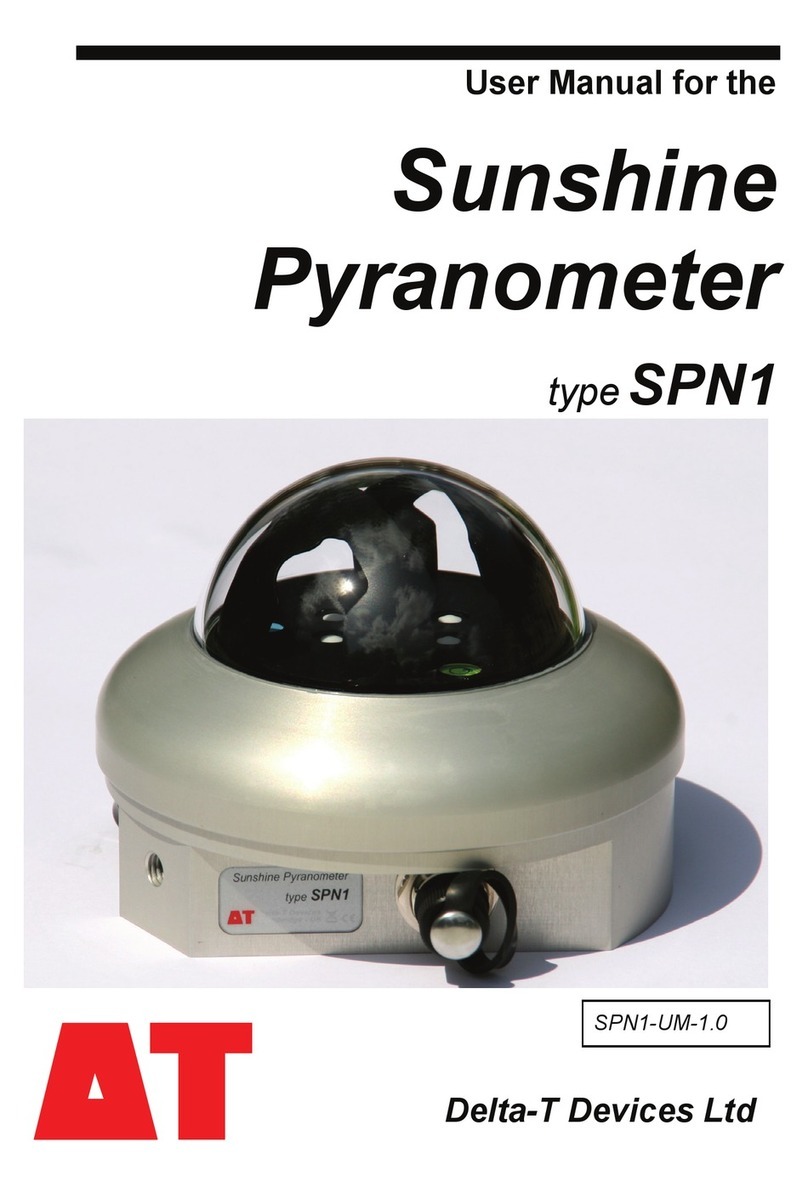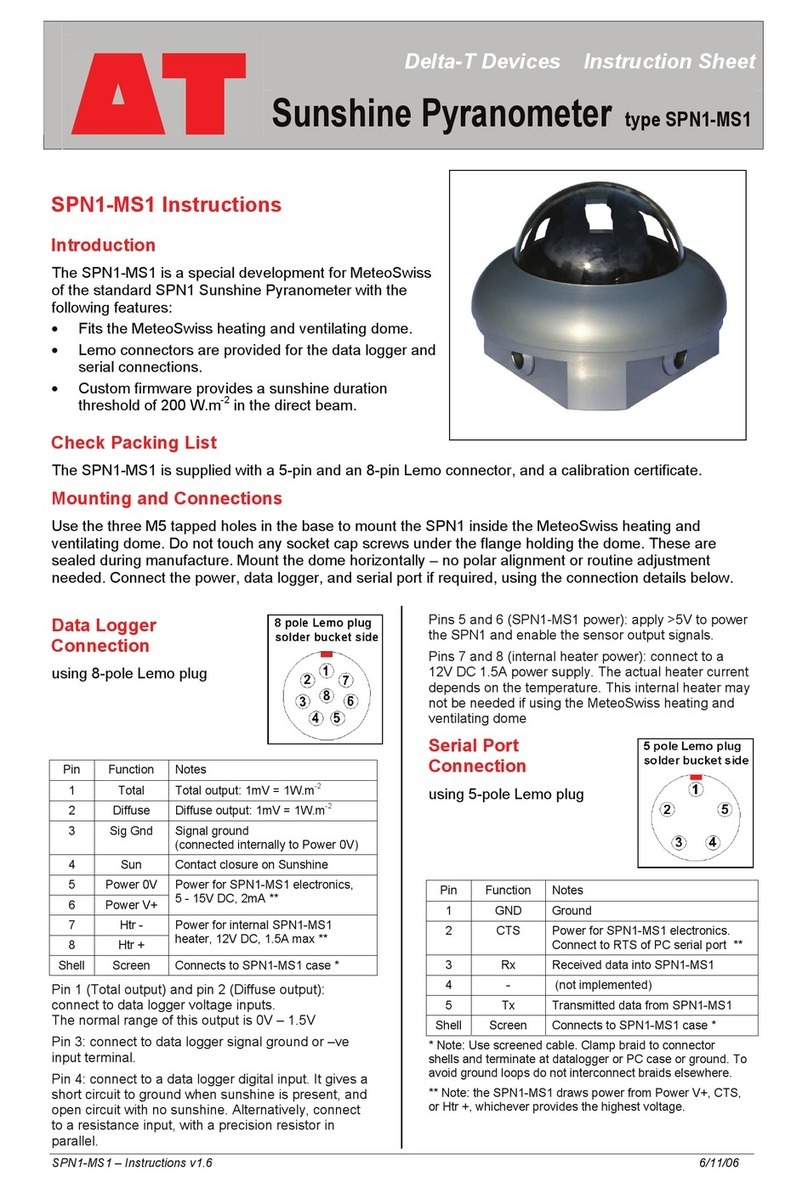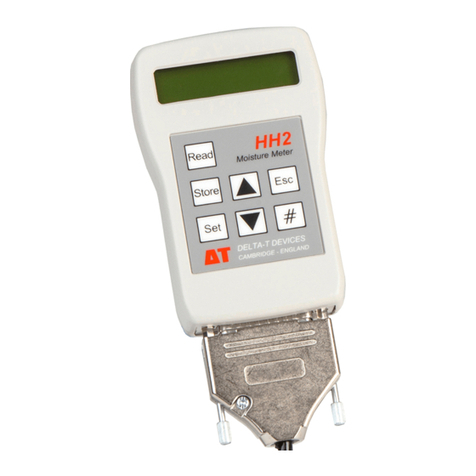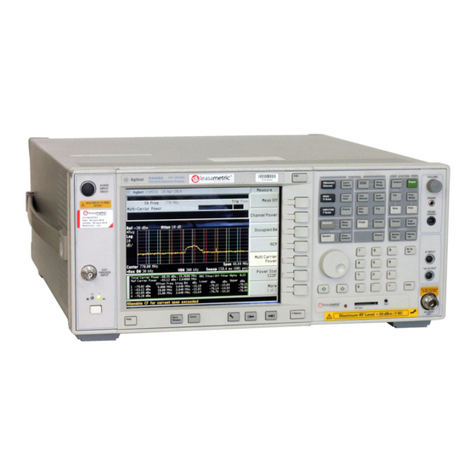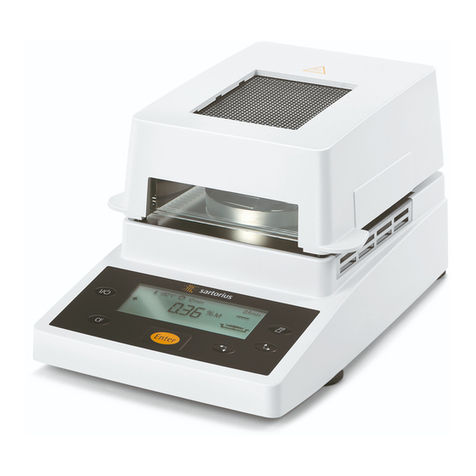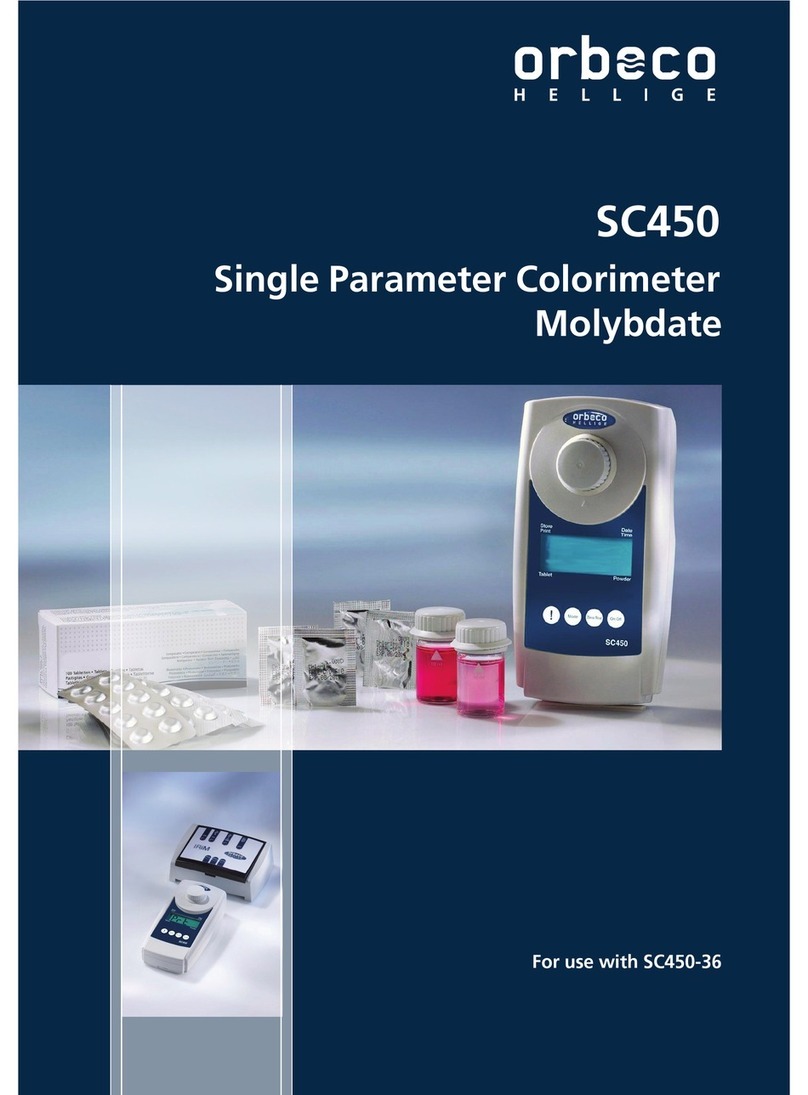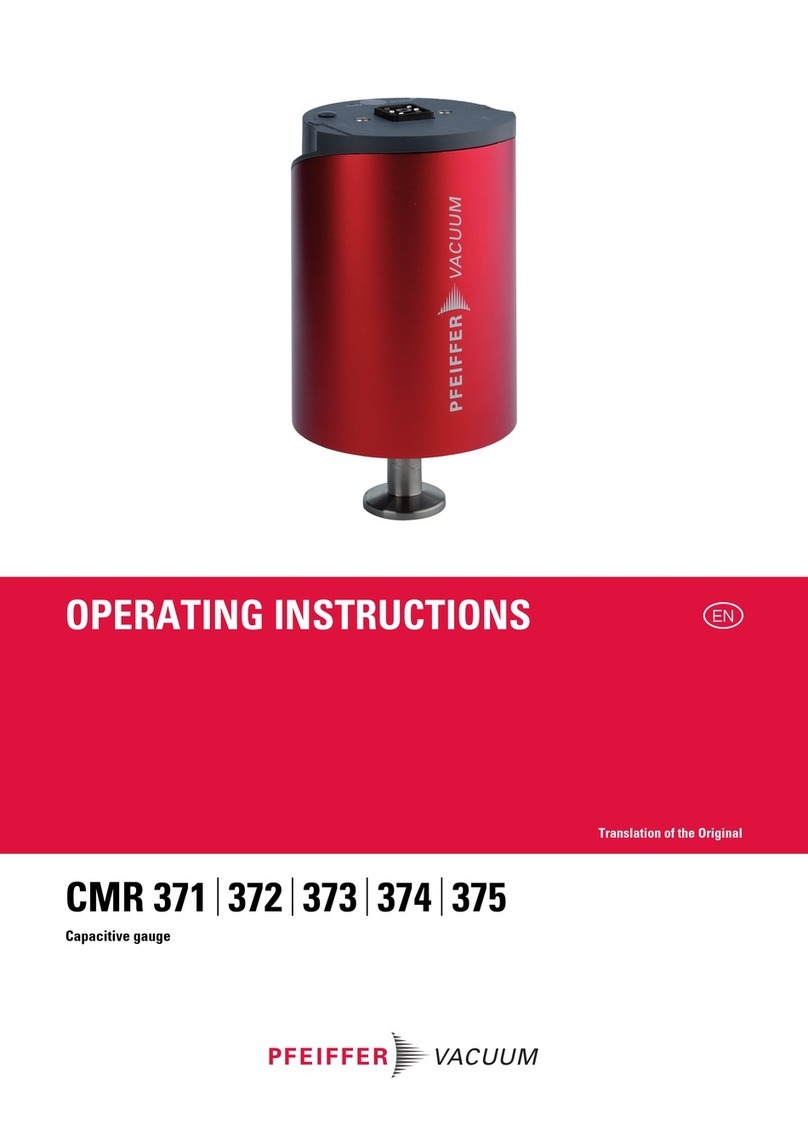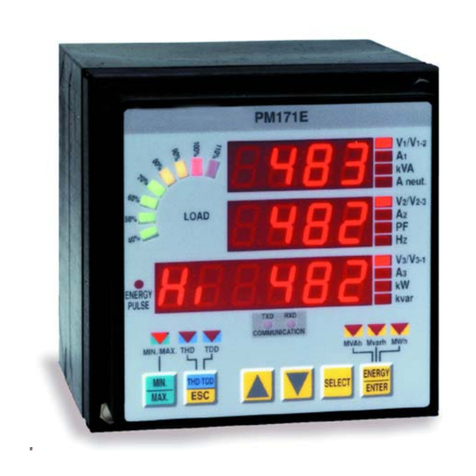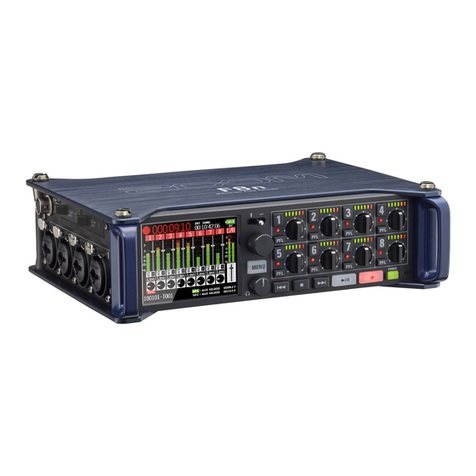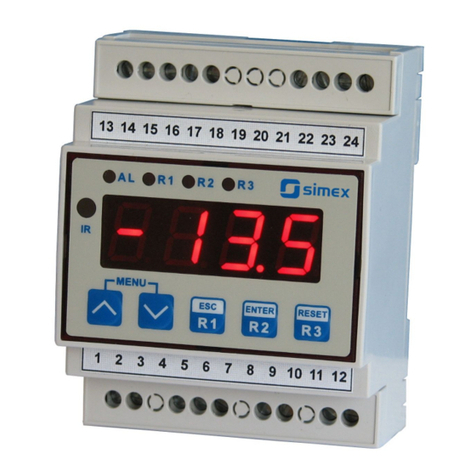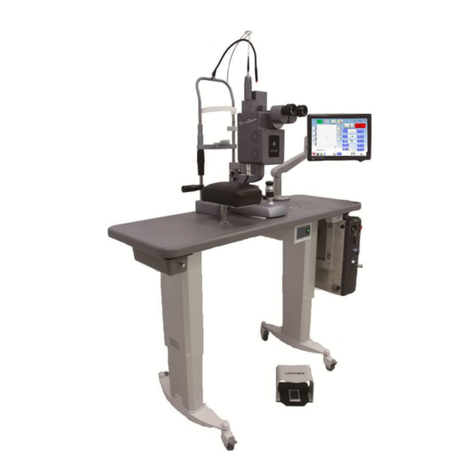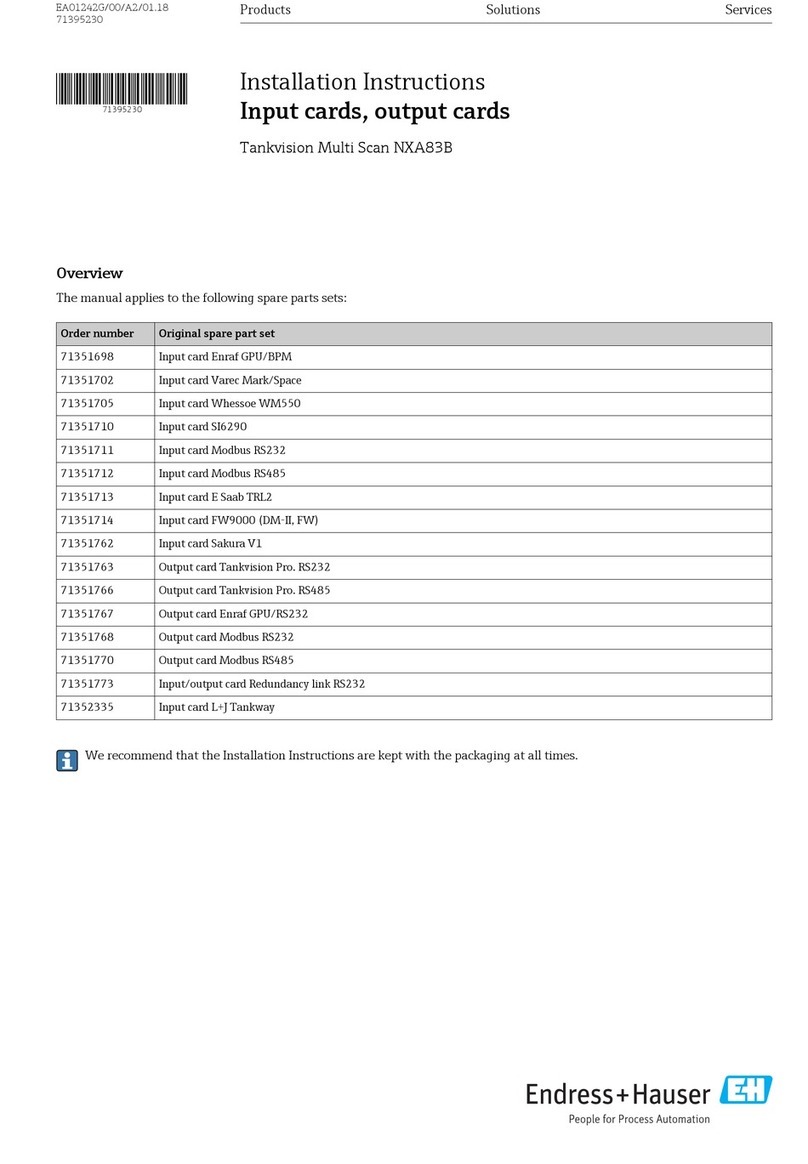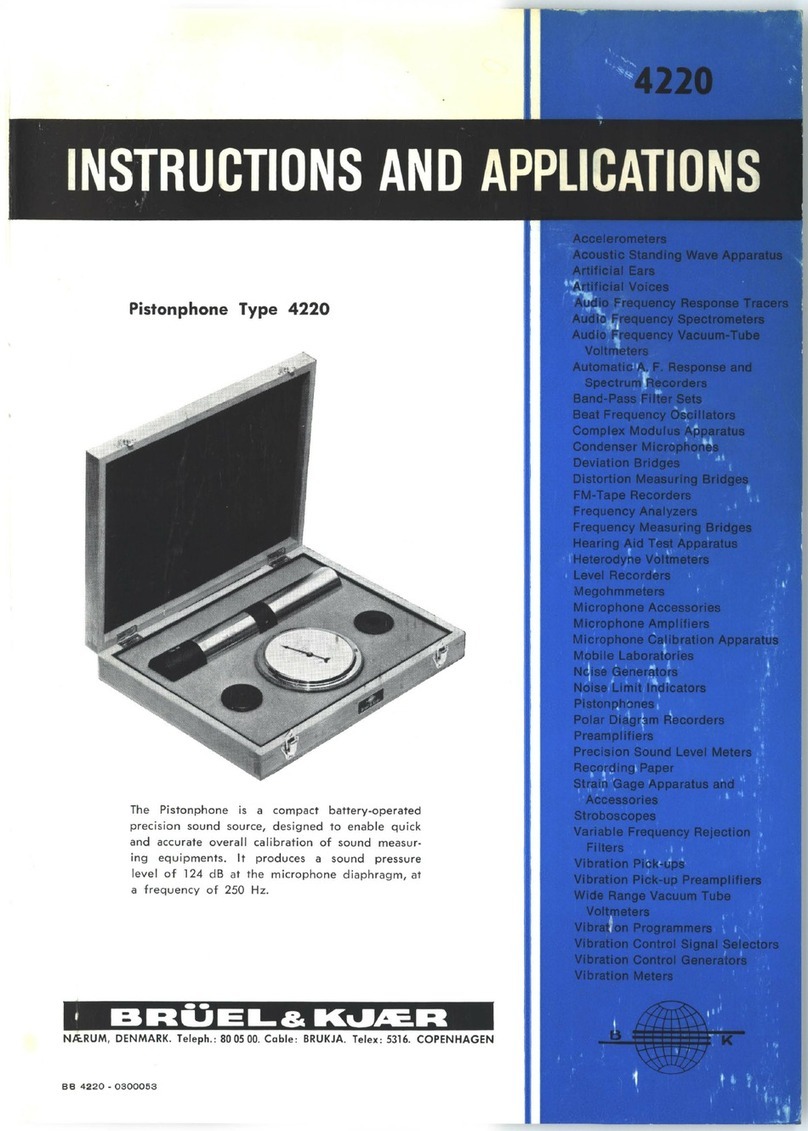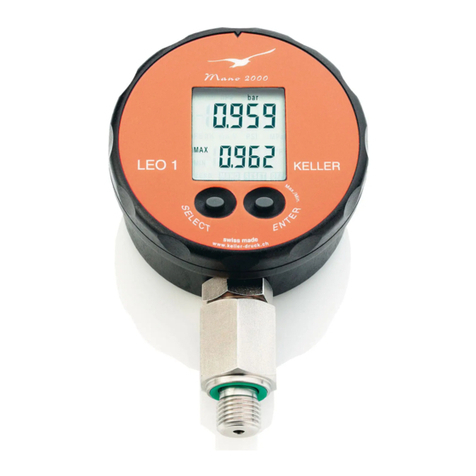Delta-T SWT4 User manual

User Manual for the
Tensiometer
types SWT4 & SWT4R
Delta-T Devices Ltd
SWT4-UM-3.1

2/52
Notices
Copyright
All rights reserved. Under the copyright laws, this manual
may not be copied, in whole or in part, without the written
consent of Delta-T Devices Ltd. and UMS GmbH. Under
the law, copying includes translation into another language.
Copyright © 2009 Delta-T Devices Limited
© 2009 UMS GmbH
CE conformity
The sensors described in this document are CE marked by
the manufacturer.
Design changes
Delta-T Devices Ltd reserves the right to change the
designs and specifications of its products at any time
without prior notice.
SWT4 User Manual, Version: 3.1 Oct 2009
Delta-T Devices Ltd
Tel: +44 1638 742922
130 Low Road, Burwell
Fax: +44 1638 743155
CAMBRIDGE CB25 0EJ
U.K.
web: http://www.delta-t.co.uk
Strictly observe rules for disposal of
equipment containing electronics.
Within the EU: disposal through municipal
waste prohibited - return electronic parts
to your local distributor

SWT4 User Manual v3.1 3
Table of contents
User Manual for the 1
Tensiometer 1
Notices 2
1Introduction 5
1.1 Safety instructions and warnings 5
1.2 Unpacking 6
1.3 Foreword 6
1.4 Guarantee 6
1.5 Durability 6
1.6 SWT4 and SWT4R 7
1.6.1 Soils and soil water 7
1.6.2 Intended use 7
1.6.3 Types 7
1.7 Quick Start 8
2Sensor Description 12
2.1 Parts 12
2.1.1 Body and shaft 12
2.1.2 Pressure sensor 12
2.1.3 Reference air pressure 12
2.1.4 The ceramic cup 13
2.2 External refilling (SWT4R only) 13
2.3 Analog output signals 14
3Installation 15
3.1 Advance planning 15
3.1.1 Selecting the measuring site 15
3.1.2 Number of Tensiometers per level 15
3.1.3 Extent of the site 15
3.1.4 Protection of refilling tubes (SWT4R only) 16
3.1.5 Use of Tube Jackets and Conduit 16
3.1.6 Ideal conditions for installation 17
3.1.7 Documentation 17
3.2 Selecting the installation angle 18
3.2.1 "Vertical" tilting downwards (SWT4R only) 18
3.2.2 "Horizontal" tilting upwards (SWT4R only) 18
3.3 Installation procedure 19
3.4 Offset correction for non horizontal installations 21
3.4.1 How to measure the zero offset of a tilted tensiometer 22
3.5 Connecting SWT4 and SWT4R 23
3.5.1 Spot reading with the SWT-MR (Infield7) 23
3.5.2 Connecting cables 23
3.5.3 Connection to a data logger 23
3.5.4 Connection to Delta-T Loggers 24
4Service and maintenance 26

4 SWT4 User Manual v3.1
4.1 Refilling 26
4.1.1 When do Tensiometers need to be refilled? 26
4.1.2 Refilling in the lab 27
4.1.3 Refilling in the field (SWT4R only) 29
4.1.4 Refilling with a vacuum pump (SWT4R only) 30
4.2 Testing 33
4.2.1 Calibration 33
4.2.2 Check the Offset 33
5Protecting the measuring site 34
5.1 Theft and vandalism 34
5.2 Cable protection 34
5.3 Frost 34
5.3.1 Protection against frost 34
5.3.2 Emptying SWT4 or SWT4R 35
5.4 Lightning protection and grounding 35
6Useful notes 37
6.1 Maximum measuring range and data interpretation 37
6.2 Temperature influences 39
6.3 Vapor pressure influence 39
6.4 Osmotic effect 39
6.5 Using Tensiometers as a piezometer 40
7Troubleshooting 40
8Appendix 41
8.1 Technical specifications 41
8.2 Wiring configuration 42
8.3 Accessories 43
8.3.1 Connecting and extension cables 43
8.3.2 Handheld measuring device 44
9Tensiometer loggers 45
9.1.1 Voltage regulators 46
9.1.2 Refill kits 46
9.1.3 Tensiometer augers 47
9.2 Units for soil water and matrix potentials 48
10 Technical Support 49
Terms and Conditions of sale 49
Service and Spares 50
Technical Support 50
Contact Details 50
11 Index 51

SWT4 User Manual v3.1 Introduction 5
1 Introduction
1.1 Safety instructions and warnings
Electrical installations must comply with the safety and EMC
requirements of the country in which the system is to be used.
Please note that any damage caused by handling errors are out of our
control and therefore are not covered by guarantee.
Tensiometers are instruments for measuring the soil water tension, and
soil water pressure and are designed for this purpose only.
Please pay attention to the following possible causes of risk:
Lightning: Long cables act as antennas and might conduct surge
voltage in case of lightning stroke –this might damage sensors
and instruments.
Frost: Tensiometers are filled with water and therefore are
sensitive to frost! Protect Tensiometers from frost at any time.
Never leave Tensiometers over night inside a cabin or car when
freezing temperatures might occur!
Tensiometers are not usually damaged when the cup is installed in
a frost-free soil horizon.
Excess pressure: The maximum non destructive pressure is
300 kPa = 3 bar = 3000 hPa. Higher pressures - which might
occur, for example, during insertion in wet clayey soils, whilst
measuring shear force, or during refilling and reassembly - will
destroy the pressure sensor!
Electronic installation: Any electrical installations must be executed
by qualified personnel.
Ceramic cup: Do not touch the cup with your fingers. Grease,
sweat or soap residues will influence the ceramic's hydrophilic
performance.

6 Introduction SWT4 User Manual v3.1
1.2 Unpacking
The SWT4 or SWT4R includes:
Tensiometer, calibrated and filled, with 4-pin plug M12/IP67 with
plug cap
This manual
Plastic bottle protecting the ceramic cup (must be half-filled with
water to keep the cup wet)
Rubber shaft water protection disk
Calibration certificate with each order for conversion of electrical to
physical values
With type SWT4R: a refill syringe
SWT4 and SWT4R are filled and ready for installation when
supplied.
See also “Accessories” on page 43.
1.3 Foreword
Measuring systems must be reliable and durable and should require a
minimum of maintenance to achieve target-oriented results and keep
the servicing low. Moreover, the success of any technical system
directly depends on it being used correctly.
At the beginning of a measuring task or research project the target, all
effective values and the surrounding conditions should be defined. This
then leads to the requirements for the scientific and technical project
management which describes all quality related processes and decides
the methods to be used, the technical and measurement tools, the
verification of the results and the modeling.
The continuously optimized correlation of all segments and its quality
assurance are decisive for the final success of a project.
We wish you good success with your projects. Please do not hesitate
to contact us for further support and information.
1.4 Guarantee
See Terms and Conditions of Sale on page 49.
1.5 Durability
The nominal lifespan for outdoor usage is 10 years, but protection
against UV-radiation and frost as well as proper and careful usage
substantially extends the lifespan.

SWT4 User Manual v3.1 Introduction 7
1.6 SWT4 and SWT4R
1.6.1 Soils and soil water
All water movement in soil is directly dependant on the soil water
tension, because water, both in the soil and on the surface, will always
move from a point of higher potential to a point of lower potential.
The majority of soil water flow take place in response to small water
tensions. Only Tensiometers allow the direct and precise measurement
of these small tensions.
Natural soils in the ground are heterogeneous. It is not just
precipitation and evaporation that matter, but also the soil texture,
particle size distribution, cracks, compaction, roots and cavities. All
these heterogeneities cause the soil water tension to vary. It is prudent
therefore to have multiple measuring points, particularly in soil
horizons close to the surface.
1.6.2 Intended use
Tensiometers measure soil water tension –a measure of the soil
matrix potential –which is the work the plant needs to do in order to
extract water from a unit volume of the soil. These Tensiometers work
from +100 kPa (water pressure) to -85 kPa (suction or soil water
tension).
If the soil gets drier than -85 kPa, the Tensiometer runs dry and must
be refilled as soon as the soil is sufficiently moist again (see Fig 6.1).
Soil water and Tensiometer water have contact through the ceramic
which is porous and permeable to water. A wetted porous ceramic
creates an ideal pore/water interface. The soil water tension is directly
conducted to the pressure transducer which offers a continuous signal.
The atmospheric reference pressure is provided through a membrane
on the cable, a unique patented method.
1.6.3 Types
The SWT4 is available in 2 versions: the standard SWT4 without
refilling tubes, and the SWT4R with refilling tubes for refilling the
Tensiometer in the field with a syringe.
Separate refilling instructions for the SWT4R are provided in section 4.

8 Introduction SWT4 User Manual v3.1
1.7 Quick Start
This section does not replace the rest of the user manual. It is only a
summary. Please read the complete manual carefully before using the
instrument, particularly Chapter 3 and 5!
1. Drilling the borehole
Mark the required drilling depth both on auger and on Tensiometer
shaft. Note: Installation depth = drilling depth / cos .
For SWT4R: For installation from the soil surface, an installation angle
of 25° to 65° from the vertical line is ideal for the optimal removal of air
from the cup (Fig. 1a). For “horizontal” installation from a manhole the
borehole should point upwards in an angle of 5° (Fig. 1b).
2. Slurrying the cup is only reasonable in clayey soils and only if the
bore hole is larger than the ceramic cup (24 mm). In coarse sand or
pebbly soils, a fine-pored slurry might create a water reservoir which
slows down the response. With the special Tensiometer gouge auger
type SWT4-AUG slurrying is unnecessary because of the accurate fit
of the Tensiometer into the hole.
3. Take off the protective plastic bottle from the Tensiometer cup. Tilt
and pull the bottle off carefully. If necessary, carefully turn it counter-
clockwise only! (as marked on the bottle)
Turn the bottle counter-clockwise only when you remove the bottle
but also when you reassemble the bottle (see arrow on bottle
label).
4. Insert the SWT4 or SWT4R into the hole to the depth mark with
constant gentle pressure and without using force.
In clayey soils a dangerous overpressure might develop. So
monitor the Tensiometers pressure with a type SWT-MR
(INFIELD7) Manual Readout Unit or a data logger.
Do not exceed -2 bar ( -200 kPa, -2000 hPa) during insertion.
Do not turn the Tensiometer after it is inserted into the ground -
this might loosen the cup.

SWT4 User Manual v3.1 Introduction 9
Note for SWT4R Tensiometers:
Pay attention to the engraved black spot on the shaft’s top end that
marks the position of the exit opening of the external filling inside
the cup:
a) Downwards installation: If the position of the cup will be lower than
the end of the shaft, the black mark must exactly face up! The optimal
installation angle is between 25° and 65°.
b) Upwards installation: If the position of the cup will be higher than the
end of the shaft, the black mark must exactly face down! The optimal
installation angle is about 5°.
Fig. 1a) Downwards installation Fig. 1b) Upwards installation
5. Push down the shaft water retaining disk to a position directly on
the soil surface.
6. For SWT4R: Slide a thermal insulation tube over the capillary
filling tubes.
7. If the plug is not connected right away leave the protective cover
on the plug. Dirt will influence the impermeability and water tightness is
only assured when the plug is kept clean.
8. Connect the Tensiometer signal wires to either a data logger or the
SWT-MR/Infield7
See also: “Wiring Configuration”on page 42
GP1-PGA1 Quick Start Guide (for GP1 Logger users)
LS2Win Software online help (for DL2e Logger users).

10 Introduction SWT4 User Manual v3.1
Please note:
Especially in loamy, clayey soils a high pressure can occur just by
inserting the SWT4 or SWT4R into the borehole. Thus, the
pressure values should be continuously observed during
installation with an SWT-MR/Infield7 Manual Readout Unit or a
data logger.
Keep it less than -200 kPa, i.e. -2000 hPa
The less air left inside the cup and the better the soil's conductivity
is, the faster the Tensiometer will respond to tension changes.
If the soil is dryer than -90 kPa (-900 hPa), it does not make sense to
refill the Tensiometer immediately. Wait until any Tensiometer that is
installed in the next lower level again reaches the reading it had when
the upper Tensiometer dried out.

SWT4 User Manual v3.1 Introduction 11
External syringe refilling (SWT4R only)
Installed SWT4R can be refilled or ventilated through
the two capillary tubes (stainless steel) without being
removed from the soil. The tubes can be extended.
With the supplied refilling syringe a measuring range of
at least -80 kPa can be assured. With the special
Refilling Kit SWT4-RK2 a range of -85 kPa can be
assured.
Reference air pressure
The reference atmospheric air pressure is conducted
to the pressure transducer via the water impermeable
(white) Teflon membrane and through the cable. The
membrane must always have contact to the air and
should never be submersed into water.
Cable gland (IP67)
SWT4 and SWT4R can be completely buried if
required. If buried, cables and tubes should be
protected. Special cable glands are available for
making tight seal to with plastic protection tube for the
cable - see Accessories on page 43.
Transparent acrylic shaft
One-piece shafts from 10 cm to 200 cm are available.
Shafts over 200 cm are divided with threaded adapter
and are available up to nearly any length.
Pressure transducer
Position of the pressure sensor opening, position of
the temperature sensor and the ventilation tube.
High grade porous ceramic cup
Filled with degassed water, with refilling tube.
Sensor body with electronic
The incorporated piezoelectric pressure sensor
measures the soil water tension against atmospheric
pressure. Direct connection to any power supply:
e.g. battery, TVB1 or TVB-M, power supply unit

12 Sensor Description SWT4 User Manual v3.1
2 Sensor Description
2.1 Parts
2.1.1 Body and shaft
The pressure transducer is integrated in the sensor body. The
electronics are completely sealed and thus well protected against
moisture. The shaft is made of transparent blue acrylic plastic and has
a very high durability and impact resistance.
2.1.2 Pressure sensor
The piezoelectric pressure sensor measures the soil water tension
against the atmospheric pressure. Atmospheric pressure is conducted
via a white air-permeable membrane on the cable, through the cable,
to the reference side of the pressure sensor.
The maximum permissible, i.e. non-destructive, pressure is 3 bar
(300 kPa, 3000 hPa). Higher pressure will damage the sensor and
absolutely must be avoided! High pressures can appear for
example when cup and sensor are reassembled, when inserted in
wet, clayey soils, or in tri-axial vessels used for measuring shear
forces.
2.1.3 Reference air pressure
The reference atmospheric air pressure is conducted to the pressure
transducer via the air permeable (white) Teflon membrane in-line in
the cable. The membrane does not absorb water. Water will not pass
through the membrane into the cable, but condenation inside the cable
can leave the cable through the membrane.
The white membrane on the cable must always have contact to air
and should never be submersed under water.

SWT4 User Manual v3.1 Sensor Description 13
2.1.4 The ceramic cup
To transfer the soil water tension as a negative pressure into the
Tensiometer, a semi-permeable barrier is required. This must have
good mechanical stability, be permeable to water and impermeable to
gas (when wet).
The Tensiometer cup consists of ceramic Al2O3sintered aluminium. A
special manufacturing process guarantees homogeneous porosity with
good water conductivity and very high hardness. Compared to
conventional porous ceramic the cup is much more durable.
The bubble point is at least 1500 kPa (15 bar, 15,000 hPa). If the soil is
dryer than -1500 kPa air can enter, the negative pressure inside the
cup decreases, and the readings go down to 0 kPa.
With these characteristics this material has outstanding suitability to
work as the semi-permeable diaphragm for Tensiometers.
The cup has a lifetime guarantee against breakage.
Ceramic cup: Do not touch the cup with your fingers. Grease,
sweat or soap residues will influence the ceramic's hydrophilic
performance.
2.2 External refilling (SWT4R only)
The SWT4R is equipped with 2
stainless-steel capillary tubes
which are led through the cable
gland and the shaft. Each one has
an opening that ends inside the
ceramic cup. This allows easy
refilling of the SWT4R while it
remains installed in the ground.
Tube 1 ends at the very tip of the
cup, tube 2 ends next to the
pressure transducer opening.
Outside, both tubes are connected together with a short rubber tube.
Any air bubbles will ascend and accumulate either in the ceramic’s tip
around tube 1 (upwards installation angle) or next to opening 2
(downwards installation angle). Accordingly the air is removed either
through tube 1 or 2 (please see chapter 3.2).
1
2

14 Sensor Description SWT4 User Manual v3.1
2.3 Analog output signals
The pressure transducer offers an linear output signal. As the output
signal directly depends on the supply voltage, the supply voltage needs
to be constant and stabilized.
As the pressure transducer is a Wheatstone full bridge, it has to be
connected in a certain way.
See also Connecting SWT4 and SWT4R on page 23
and the user manual for your display unit or data-logger before
connection.
Black mark on tube

SWT4 User Manual v3.1 Installation 15
3 Installation
3.1 Advance planning
3.1.1 Selecting the measuring site
The installation spot should be representative of the soil horizon!
Therefore, in heterogeneous soils, soil samples should be taken and
classified before or during installation.
On farmed sites with vegetation, root spreading and root growth during
the measuring period must be considered. Fine roots will grow around
the Tensiometer cup as this is a poor but still secure source of water.
Therefore, avoid the root zone or move the Tensiometer from time to
time depending on the root growth.
Disturbing effects like the edge of a field, slopes or hollows must be
avoided or taken into account when interpreting the data.
3.1.2 Number of Tensiometers per level
The deeper the level, the less the variation is in water potential. In
lower sandy or pebbly horizons just one Tensiometer per depth is
sufficient. Close to the surface about 3 Tensiometers per level are
recommended.
Guiding principle: More heterogeneous sites and soil structures
require a higher number of Tensiometers.
3.1.3 Extent of the site
A large number of well-spaced samples will help reduce sampling
errors in heterogeneous soils.
To obtain a differential description of the soil water situation, at least 2
Tensiometers are recommended per horizon, one in the upper and one
in the lower level.
The maximum recommended cable length for SWT4 and SWT4R is 40
meters.
Accuracy: long cables reduce the accuracy.
Lightning: cables act as antennas and should always be as short as
possible.

16 Installation SWT4 User Manual v3.1
3.1.4 Protection of refilling tubes (SWT4R only)
A recent study by Prof. Wolfgang Durner showed that refilling tubes
must be protected from heating up and solar radiation.
If a bubble grows inside a refilling tube, temperature changes will lead
to an expansion of the air, resulting in a variation of the reading.
Therefore, refilling tubes should be as short as possible and should be
thermally protected, either by providing an insulating protection or by
burying the tubes.
Thermal effect:
As long as the Tensiometer and its tubes are
freshly and completely filled it will work
perfectly. Any air trapped inside the upper
parts of the tube will expand when heated up
by solar energy. This causes a drop of the
water tension and some water will flow from
the cup into the ground.
Thus, readings will fluctuate around the actual
reading during solar radiation, specially with
low water potentials. Furthermore, under
permanent solar exposure the tubes get sticky
and brownish.
Slide the supplied thermal insulation tube over the shaft end and the
refilling tubes as shown in above photo!
3.1.5 Use of Tube Jackets and Conduit
Tube Jackets: These are useful with shafts
longer than 2 m, in pebbly soils or gravel, and
for horizontal installations from inside a well or
pit hole. The tube jacket should end 30 to 50
cm away from the cup so that no leakage or
condensation is conducted to the cup. The
inner diameter of the jacket should be at least
35 mm.
Thermal inuslation
tube
Tube Jackets

SWT4 User Manual v3.1 Installation 17
Conduit: This pictures shows an example of
the use of flexible cable conduit (trunking) to
protect the tensiometer cables.
3.1.6 Ideal conditions for installation
For the installation of Tensiometers, the ideal conditions are:
Frost-free soil.
Wet coarse clay or loess (wind deposited soil).
Low gravel content. The more gravel in a soil the more often the
drilling has to be repeated to reach the required depth.
3.1.7 Documentation
For every measuring spot you should:
Measure out the position where the pressure sensor will be
placed. (A must for installations below the ground surface).
Take documentary photos before, during and after installation.
Save a soil sample.
Write down installation depth and angle with each sensor
identification (serial number).
Mark all connecting cables with the corresponding sensor
identification, serial number or logger channel on each end.
Clip-on numbered rings are available as
an accessory.
Contact Delta-T for more information.

18 Installation SWT4 User Manual v3.1
3.2 Selecting the installation angle
Ideally, a Tensiometer installation should not disturb the flow of water.
To prevent the preferential flow of water along the shaft Tensiometers
should be installed at an angle.
3.2.1 "Vertical" tilting downwards (SWT4R only)
When installed from the surface, an angle of 25° to 65° from the
vertical is optimal for refilling. In an absolutely vertical position air
bubbles might hide inside the edges of the cup adapter. Still, they
could be removed completely with a hand vacuum pump (contact
Delta-T for details).
In this position, the refilling tube is the shorter stainless steel tube with
the black mark. Water is injected Into this tube for refilling.
Before inserting the Tensiometer, orient the shaft so the black mark
near the shaft end points upwards.
Do not rotate the shaft after it is inserted into the ground as this
might loosen the cup.
3.2.2 "Horizontal" tilting upwards (SWT4R only)
When installed horizontally from inside a well or pit hole, the
Tensiometer must point upwards! This means the cup is in a higher
position than the end of the shaft. An upward angle of approx. 5° is
ideal for refilling. Note that now de-airing and refilling tube are
switched: the refilling tube is the longer stainless steel tube without the
black mark. Water is injected into this tube for refilling.
Before inserting the Tensiometer, turn the shaft so the black mark
near the shaft end points downwards.
Do not turn the shaft after it is inserted into the ground as this might
loosen the cup.
Note that with a horizontal installation the (optional) filling indicator
will not react until the cup is almost empty.

SWT4 User Manual v3.1 Installation 19
3.3 Installation procedure
For the installation of the Tensiometer in the field the following tools
are required:
Tensiometer auger with diameter 25 mm, ideally the SWT4-AUG
Gouge Auger with shaped blade tip.
Rule, spirit level, angle gauge, marker pen.
Notebook, camera for documentation of site and soil profile.
Perhaps PE-plastic bags for taking soil samples from the site.
Thermal insulation tubes for installations from soil surface.
Cable protection conduit.
Tube Jackets if required (inner diameter > 35 mm).
Please observe the following notes:
Do not touch the cup with your fingers. The ceramic should not have
contact with grease or soap as this will influence the hydrophilic
performance.
Do not leave the cup in air for more than 5 minutes as Tensiometer
water will evaporate and the Tensiometer will need to be refilled.
Procedure:
1. Mark the required drilling depth on auger and Tensiometer shaft.
The reference point is the center of the cup. Drill a hole with the
desired depth on the chosen measuring spot. Auger in steps. Take
care when drilling the last 20 cm, remove and save this soil. Water
will not run along the shaft if the Tensiometer is installed in an
angle because the water will drain into the soil before it reaches
the cup.
Read the chapter "Selecting the installation angle" for the best
installation angle on page 18.
2. When using augers with a diameter of over 25 mm, mix a paste of
water and crumbled soil material taken out of the borehole. Fill the
paste into the bottom area of the borehole by using a simple pipe
with outer diameter 2 cm.

20 Installation SWT4 User Manual v3.1
3. Now remove the protective plastic bottle from the Tensiometer cup.
Important: Only turn the bottle counter-clockwise when taking the
bottle off - and also when putting it back on again!
Save the plastic bottles: Do not store the Tensiometer without the
protective plastic bottle since the cup empties quickly! The bottle
must be filled with some water for storage!
4. Connect the Tensiometer to a readout unit. Carefully insert the
SWT4/SWT4R into the borehole up to the stop while continuously
observing the pressure signal.
Do not use any force. Do not hit the Tensiometer - this may damage
cup and pressure sensor.
Especially in clayey soils the pressure reading must be monitored as
high pressures might build up! The pressure should not exceed 200
kPa (2000 hPa) (because >300 kPa is fatal!)
Note for SWT4R Tensiometers:
Important: Pay attention to the engraved black spot on the shaft’s top
end that marks the position of the exit opening of the external filling
inside the cup:
a) Downward tilting installations: If the position of the cup will be lower
than the end of the shaft, the black mark must exactly face up!
b) Upward tilting installations: If the position of the cup will be higher
than the end of the shaft, the black mark must exactly face down!
Fig. 3a) Downwards installation Fig. 3b) Upwards installation
This manual suits for next models
1
Table of contents
Other Delta-T Measuring Instrument manuals
